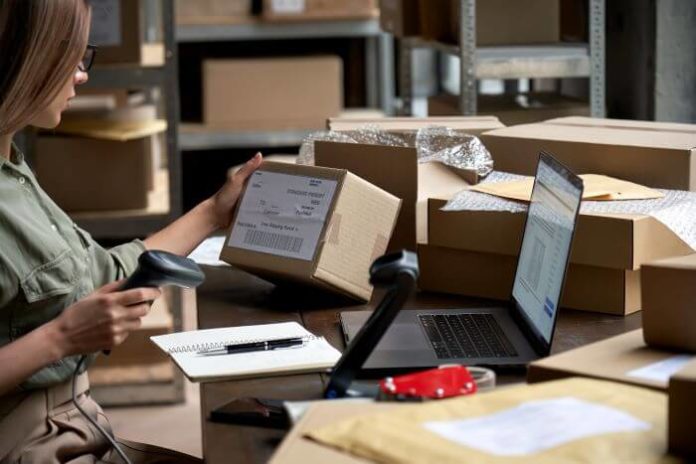Nowadays, many businesses are discovering the convenience of shifting to e-commerce rather than operating conventionally through brick-and-mortar stores. With the ongoing pandemic, which has reduced people’s visits to malls and shops, online transactions are becoming common. Whether you’re a newly opened online business or a seasoned entrepreneur looking to switch to eCommerce, it’s essential to know some of the best practices in shipping and fulfillment.
Many e-commerce business owners would agree that these two aspects are important. Tangible products must be shipped in a timely manner, so your customers will have a great experience with your brand. No matter what kind of logistics system you utilize, whether it’s Epacket shipping or air freight cargo, you need to ensure that everything runs smoothly and efficiently. When such procedures go wrong, there’s a risk of losing business and clients in both the long and short term.
Hence, here are some beginner tips to make your eCommerce shipment and fulfillment processes seamless:
#1: Choose Your Packaging Options
Your products must be packaged safely for transport before delivering them to your clients. Basically, packaging is all about ensuring that the items arrive at their destination in a secure and safe condition. The majority of customer complaints and returns are the result of product damage while in transit, which is primarily caused by inadequate packaging.
Today, however, many businesses and buyers place a premium on packaging in terms of aesthetics and style. Therefore, you must exercise caution when it comes to packaging. Ridged, two-sided cardboard boxes are inexpensive when purchased in bulk and can be used to ship many kinds of products. To protect fragile products from impact as they travel through the various transit stages, cushion the box’s interior with bubble wrap.
Among the packaging options available are boxes and envelopes. You’ll need a box and various packaging materials to ship your products safely. Thankfully, there are sustainable packaging alternatives today, and many eCommerce businesses are switching to these packaging options. If you’re starting an online business from home, think of your packaging options early on, which can help make your business successful.
#2: Select Your Fulfillment Processes
Choosing the proper fulfillment method for your business is essential in creating a strong shipping strategy. There are various fulfillment options such as self-fulfillment, third-party logistics, and dropshipping. The first one means you’ll be in charge of your shipment, from the time it’s in stock until it’s ready for shipping. Third-party logistics also known as 3pl logistics require you to partner with a logistics provider who will be responsible for shipping your items to your customers.
Lastly, dropshipping is an online fulfillment method that does not require stocking and inventories. Wholesalers and manufacturers fulfill client orders directly. Dropshipping does not require upfront purchases or inventory storage. New businesses are looking to implement this fulfillment process because of the convenience. There are pros and cons to each strategy. Therefore, choose one that is most suitable for your business type.
#3: Utilize An Efficient Shipping Software
Another way to accomplish your shipping and fulfillment is through shipping software. No matter how small or new your eCommerce business is, you will benefit from shipping software, even if you only order your postage online.
You can usually get a discount on shipping or postage through shipping software. Such software usually comes with features that track your parcel’s previous record history or quickly pay shipment costs. This technology makes your operations faster and easier.
#4: Consider Insurance
If you are selling high-value items, shipping insurance, and tracking provide a great deal of security. When an item is damaged or lost during shipment or delivery, most carriers offer tracking and insurance for a nominal fee. This is something that you should consider if you want to ensure a smooth shipment of your expensive items.
Whenever you ship high-value items, make sure you insure them. Aside from the peace of mind this brings, your products can be safe during emergencies and accidents. In the unlikely event that your parcel is lost and damaged, you’ll be compensated for your loss.
#5: Determine A Uniformed Shipping Price Ranges
If your products are relatively uniform across your store, it might be best to ship zone-based, where the shipping price is determined by the customer’s location rather than the product size or weight. Knowing how much you’re charging for shipment beforehand would be beneficial. You can ensure you offer your customers the best rates by getting them directly from the carriers.
To get the most accurate rate from a carrier, make sure that the weights and dimensions of your products are correct. You can have a fixed price range for boxes and weights, depending on the products you’re selling. Having a uniform rate will be more convenient for you and your customers.
Conclusion
After you’ve launched your new shipping and fulfillment strategy, you’ll be able to see how your business can benefit from it. Hopefully, the tips stated in this article will make your shipping and fulfillment processes more manageable and easier. Remember to keep up to date with technology and logistics systems so that you can ship out your products to your customers faster.







